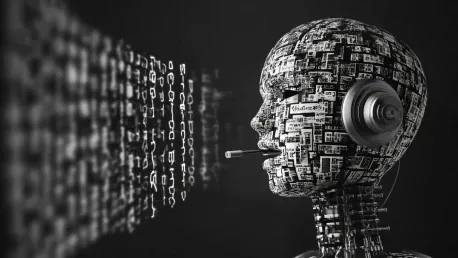Artificial Intelligence (AI) is redefining our world, touching various aspects of personal expression and professional practices. One such example is ChatGPT, a sophisticated language model developed by OpenAI. From fostering creativity in hobbies to transforming language learning and intercultural communication, ChatGPT is making a profound impact. This article delves into the manifold ways AI, particularly ChatGPT, is reshaping creativity and education globally.
Revolutionizing Creative Hobbies
Enhancing Writing and Storytelling
Artificial intelligence, especially ChatGPT, is breathing new life into writing and storytelling. For writers, AI serves as a source of endless inspiration. It generates story ideas, provides detailed character descriptions, and offers invaluable assistance with narrative development. Writers facing creative blocks can rely on AI to suggest new plot twists or develop engaging dialogues, ensuring the creative process remains fluid and productive. By providing constant feedback and new perspectives, ChatGPT helps authors tackle complex themes and articulate their narratives with greater depth and nuance.
Beyond mere idea generation, ChatGPT offers a collaborative experience where writers can brainstorm and refine their craftsmanship. The language model can simulate different writing styles, offering writers opportunities to blend genres and adopt unique voices. This facility extends to novice and professional writers alike, making creative writing more accessible and less daunting. Through a blend of automation and human creativity, AI has opened new avenues for storytelling, bringing forth a renaissance of literary innovation.
Impact on Visual Arts and Crafting
In the realm of visual arts and crafting, AI is equally transformative. Artists can seek suggestions on color palettes and composition styles from ChatGPT. This AI tool also offers constructive feedback on existing artwork, helping artists refine their creations. Crafters find inspiration for new projects and insights into current trends, ensuring they stay relevant and innovative in their pursuits. In addition to this, ChatGPT can generate themes and styles that resonate with contemporary audiences, thereby fostering a dynamic exchange of ideas between human creators and intelligent algorithms.
AI also assists in technical aspects, such as 3D modeling, digital painting, and graphic design. By leveraging AI’s analytical capabilities, artists and crafters gain deeper insights into consumer preferences and artistic trends. ChatGPT’s recommendations often align with current market dynamics, providing creators with a competitive edge. Whether one is crafting a bespoke piece of jewelry or conceptualizing a new art exhibition, AI’s integration in visual arts and crafting signifies a paradigm shift toward more informed and inspired creation processes.
Innovations in Music Composition
Musicians also benefit profoundly from AI integration. ChatGPT aids in lyrics creation and explores various musical styles, assisting composers in blending genres and experimenting with new sounds. By providing references to existing works and suggesting fresh ideas, AI enables musicians to push the boundaries of their creativity. This AI tool’s ability to analyze vast musical databases allows it to offer unique compositions, chord progressions, and thematic elements that resonate well with diverse audiences. From novice composers to industry veterans, ChatGPT serves as a collaborative partner in the musical creative process.
Beyond composition, AI tools are also revolutionizing music production and arrangement. ChatGPT can assist in orchestrating complex pieces, suggesting instrumentation, and even mastering recordings. This comprehensive approach ensures that the creative journey from inception to final production is seamless and innovative. Musicians can explore uncharted territories in sound, guided by AI’s analytical prowess and creative ingenuity, making the musical landscape richer and more varied than ever before.
Transforming Education and Language Learning
Personalized Learning Experiences
AI’s role in education, particularly language learning, is groundbreaking. AI-powered platforms tailor learning experiences to individual needs, focusing on specific areas requiring improvement. This personalized approach maintains student engagement and ensures more effective learning outcomes. ChatGPT, for instance, assists learners by providing idiomatic expressions, slang, and cultural references, thus enriching both language proficiency and cultural understanding. This kind of adaptability allows for a more targeted educational approach, offering learners the tools they need to succeed based on their unique learning styles and preferences.
AI’s ability to monitor progress and adapt instruction dynamically makes it an invaluable educational tool. Students who struggle with certain language aspects can receive intensive practice tailored to their needs, while those who excel can be pushed toward more advanced content. Teachers, in turn, receive actionable insights from AI analytics, enabling them to intervene more effectively. This symbiotic relationship between AI and human educators fosters a more efficient and engaging learning environment. The personalized support that ChatGPT provides ensures that each learner’s journey is as enriching and effective as possible.
Cultural Context and Nuances in Language Learning
Understanding cultural nuances is pivotal for mastering a language, and AI plays a crucial role here. By introducing learners to cultural subtleties, ChatGPT enhances sophisticated and confident communication. Exposure to idiomatic expressions and cultural references is paramount, granting learners a deeper comprehension of the language’s cultural context. AI facilitates this understanding by providing contextually rich examples and real-life applications, making language learning more relatable and engaging. Students can practice scenarios that they might encounter in real-life conversations, enhancing their ability to navigate different cultural landscapes fluently.
AI also helps bridge cultural gaps by offering learners insights into the gestures, traditions, and social norms associated with different cultures. This comprehensive approach ensures that language learners are not just fluent but are also culturally competent, which is increasingly important in our globalized world. ChatGPT’s ability to simulate diverse dialogues and cultural interactions can help learners anticipate and respond to culturally specific nuances, thus fostering a more holistic understanding of language and its use in various social contexts.
Encouraging a Growth Mindset
AI creates a supportive environment for learners, encouraging them to take risks without fear of mistakes. This non-judgmental space promotes a growth mindset where errors are viewed as learning opportunities. Consequently, learners become more resilient and motivated, resulting in more effective language acquisition. The continuous feedback loop provided by AI helps learners identify their strengths and weaknesses, empowering them with the knowledge needed to improve and excel. Such an environment nurtures curiosity and persistent effort, both of which are critical for mastering any new skill.
Aside from language learning, AI’s growth-oriented approach can be applied to other educational disciplines. By leveraging AI tools, students can engage with complex subjects without the anxiety that often accompanies traditional assessment methods. The reassurance that errors are part of the learning process encourages more proactive and confident learners. This mindset shift is transformative, turning educational challenges into manageable and even enjoyable experiences. The impact of AI in promoting a growth mindset extends beyond the classroom, preparing learners for lifelong growth and adaptation in various real-world contexts.
Addressing AI Challenges and Future Developments
Tackling Cultural Sensitivity and Translation Accuracy
Despite its advancements, AI still struggles with cultural sensitivity and translation accuracy. Literal translations can sometimes introduce errors or foster misinterpretations. This highlights the importance of continuous improvement in AI algorithms and the necessity of human oversight. Developers are working tirelessly to refine these systems, ensuring they become more culturally aware and contextually accurate. Accurate translation requires not just linguistic knowledge but also a deep understanding of cultural idiom and local context, a challenge that continues to evolve as AI systems learn and grow.
To address these limitations, AI developers are increasingly collaborating with cultural experts and linguists. This multidisciplinary approach helps in creating algorithms that can handle the complexities of human languages more effectively. Additionally, incorporating user feedback is crucial to improving AI’s performance in this area. Each interaction provides valuable data that helps refine the algorithms, making them more adept at capturing the nuances of human language. The goal is for AI tools like ChatGPT to offer translations and cultural insights that are not just accurate but also emotionally and contextually relevant.
Future Prospects of AI in Language Barrier Reduction
The future integration of AI in reducing language barriers is promising. By facilitating real-time translations and offering cultural insights, AI promotes inclusivity and global communication. This vision entails ongoing advancements that make AI tools more robust, reliable, and capable of bridging linguistic and cultural gaps seamlessly. Future AI developments may include more intuitive systems that can adapt to the evolving linguistic landscape, accurately capturing new slang, idiomatic expressions, and cultural references as they emerge.
Looking forward, the integration of AI with augmented reality (AR) and virtual reality (VR) offers exciting prospects for language learning and intercultural communication. Imagine a learner practicing a new language in a simulated environment that mimics real-world settings, complete with cultural cues and interactive dialogues. Such immersive experiences could significantly enhance the effectiveness of language acquisition and cultural integration. By continually pushing the boundaries of what is technologically possible, AI stands as a beacon of hope in creating a more connected and inclusive world.
Bridging Language Barriers and Fostering Inclusivity
Non-Judgmental Environment for Learners
AI’s non-judgmental nature significantly benefits language learners. The supportive atmosphere allows individuals to make mistakes and learn from them, fostering a growth-oriented approach. This method is particularly effective in language acquisition, encouraging students to experiment with new phrases and structures without the fear of judgment. As learners become more confident, their proficiency and ability to interact in a new language improve, fostering a balanced and intuitive learning experience. This aspect of AI provides an important psychological boost, making the learning process both enjoyable and rewarding.
Moreover, the accessible and flexible nature of AI learning tools ensures that education is not confined to traditional classroom settings. Learners can engage with AI-assisted language programs from anywhere, at any time, making education more inclusive. This flexibility is particularly important for individuals with busy schedules, as it allows them to incorporate learning into their daily routines. AI’s non-judgmental and flexible approach ensures that language learning is more accessible, accommodating, and effective for a broader audience, thus democratizing education and opening doors for many who might otherwise struggle to find time for traditional learning methods.
Promoting Intercultural Communication
Artificial Intelligence (AI) is revolutionizing both our personal and professional worlds, influencing how we express ourselves and perform our jobs. A prime example of this technological marvel is ChatGPT, an advanced language model developed by OpenAI. The capabilities of ChatGPT are vast, ranging from inspiring creativity in personal hobbies to significantly enhancing language learning and intercultural communication. In the realm of personal interests, ChatGPT functions as a creative partner, offering new ideas and solutions that enrich creative projects. Professionally, it serves as a valuable tool for education, aiding in language acquisition by providing instant feedback, conversational practice, and cultural nuances. This model not only supports the learning process but also fosters better understanding between different cultures. This article aims to explore the diverse ways in which AI, specifically ChatGPT, is transforming creativity and educational practices across the globe, illustrating its profound and far-reaching impact on society and individuals alike.









